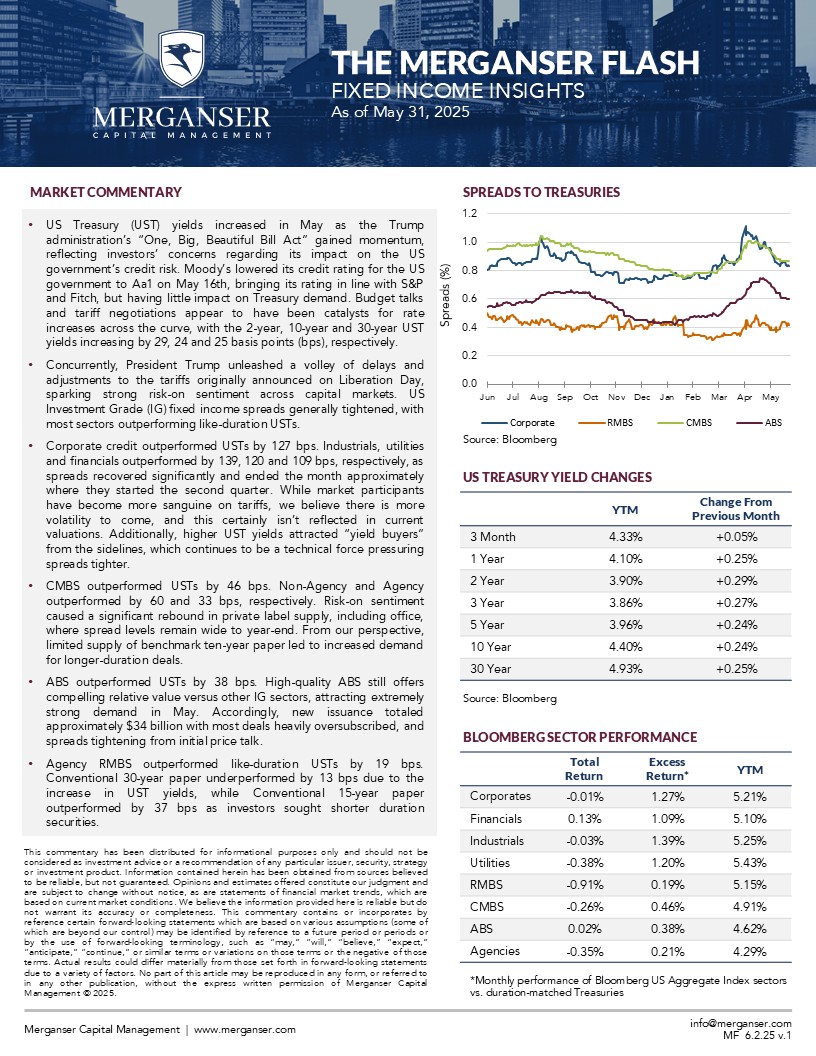- US Treasury (UST) yields increased in May as the Trump administration’s “One, Big, Beautiful Bill Act” gained momentum, reflecting investors’ concerns regarding its impact on the US government’s credit risk. Moody’s lowered its credit rating for the US government to Aa1 on May 16th, bringing its rating in line with S&P and Fitch, but having little impact on Treasury demand. Budget talks and tariff negotiations appear to have been catalysts for rate increases across the curve, with the 2-year, 10-year and 30-year UST yields increasing by 29, 24 and 25 basis points (bps), respectively.
- Concurrently, President Trump unleashed a volley of delays and adjustments to the tariffs originally announced on Liberation Day, sparking strong risk-on sentiment across capital markets. US Investment Grade (IG) fixed income spreads generally tightened, with most sectors outperforming like-duration USTs.
- Corporate credit outperformed USTs by 127 bps. Industrials, utilities and financials outperformed by 139, 120 and 109 bps, respectively, as spreads recovered significantly and ended the month approximately where they started the second quarter. While market participants have become more sanguine on tariffs, we believe there is more volatility to come, and this certainly isn’t reflected in current valuations. Additionally, higher UST yields attracted “yield buyers” from the sidelines, which continues to be a technical force pressuring spreads tighter.
- CMBS outperformed USTs by 46 bps. Non-Agency and Agency outperformed by 60 and 33 bps, respectively. Risk-on sentiment caused a significant rebound in private label supply, including office, where spread levels remain wide to year-end. From our perspective, limited supply of benchmark ten-year paper led to increased demand for longer-duration deals.
- ABS outperformed USTs by 38 bps. High-quality ABS still offers compelling relative value versus other IG sectors, attracting extremely strong demand in May. Accordingly, new issuance totaled approximately $34 billion with most deals heavily oversubscribed, and spreads tightening from initial price talk.
- Agency RMBS outperformed like-duration USTs by 19 bps. Conventional 30-year paper underperformed by 13 bps due to the increase in UST yields, while Conventional 15-year paper outperformed by 37 bps as investors sought shorter duration securities.


